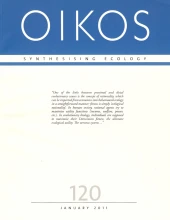During a long and interesting post on storytelling in science, Andrew Gelman makes the following remark about some famous statisticians and the techniques they’ve developed:
The many useful contributions of a good statistical consultant, or collaborator, will often be attributed to the statistician’s methods or philosophy rather than to the artful efforts of the statistician himself or herself…Rubin wielding a posterior distribution is a powerful thing, as is Efron with a permutation test or Pearl with a graphical model, and I believe that (a) all three can be helping people solve real scientific problems, and (b) it is natural for their collaborators to attribute some of these researchers’ creativity to their methods.
I think this is right. Techniques and approaches, statistical or otherwise, aren’t powerful except in narrow and, in the grand scheme of things, rather unimportant senses. If techniques were really what mattered, science could be reduced to a recipe that anyone could follow.* What matters most, I think, is how and to what the technique is applied, and how the results are interpreted and linked to other evidence and ideas. None of that can be automated or routinized. Which means that what really matters is the ability of the scientist using the technique or approach. Rich Lenski wielding a vial of bacteria is a powerful thing, as is Mathew Leibold with a simple food web model, or Jon Losos with a phylogeny, or Tony Ives with an autoregression, or Peter Morin with a jar of protists, or me Steven Frank with the Price equation.
It remains to be seen if “me wielding zombie jokes” turns out to be powerful. 😉 If it does, this is what I’m going to say. 😉
*Francis Bacon thought this was possible (“But the course I propose for the discovery of sciences is such as leaves but little to the acuteness and strength of wits, but places all wits and understandings nearly on a level.”) There’s much that he got right in “The New Organon” (1620), but I think this bit is wrong.


False dichotomy. A sniper rifle is powerful although only certain people can wield it effectively; even fewer understand which targets will change the course of a conflict. A confocal microscope is powerful even though only certain people have the skill to operate it and are aware which questions will change a field when addressed through microscopy. Scientific methods can be ‘powerful’ even though their use requires both training and talent, and their transformative impact is only felt when the right topics and questions are addressed.
By: Ben on June 2, 2012
at 12:01 am
Sure. That’s the point of the post, sorry if it didn’t come across.
By: Jeremy Fox on June 2, 2012
at 12:14 am